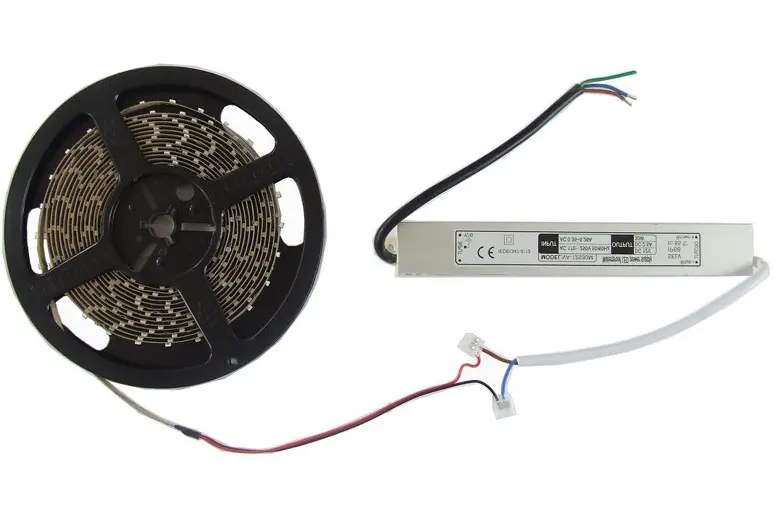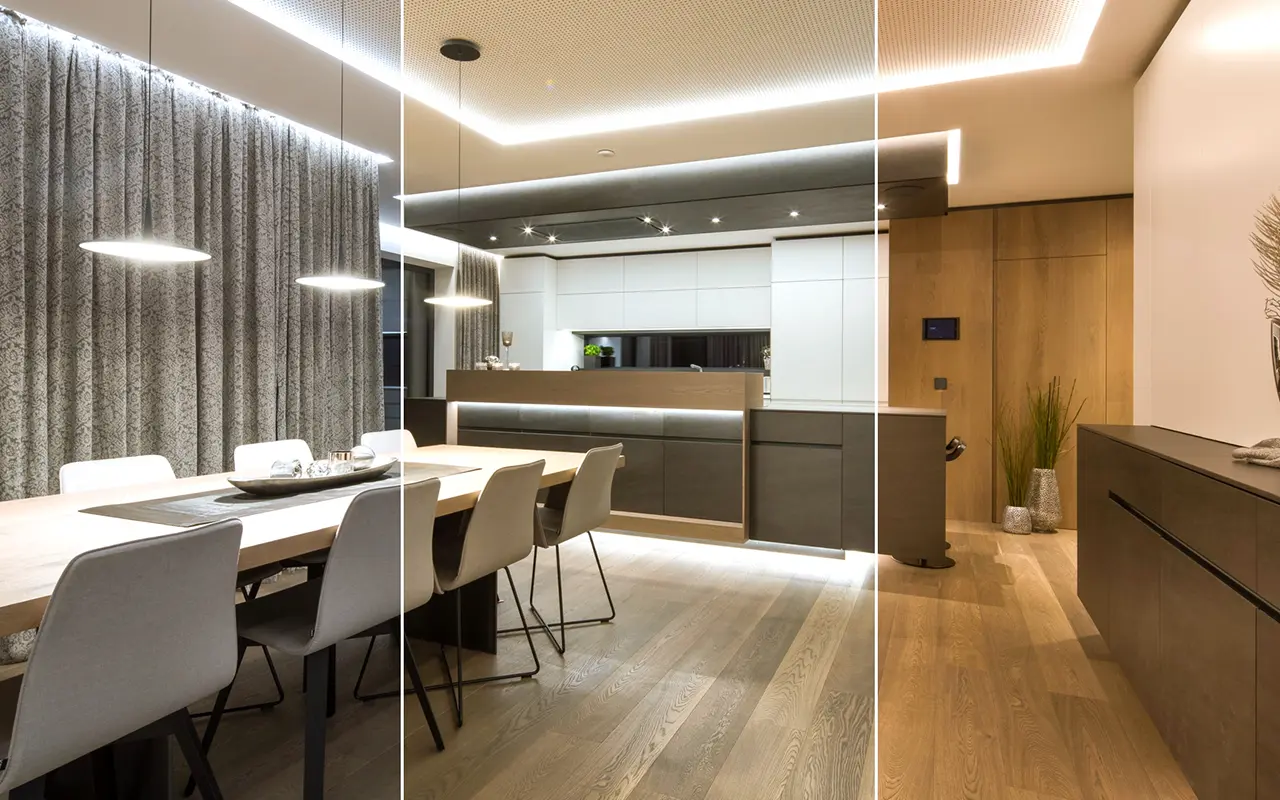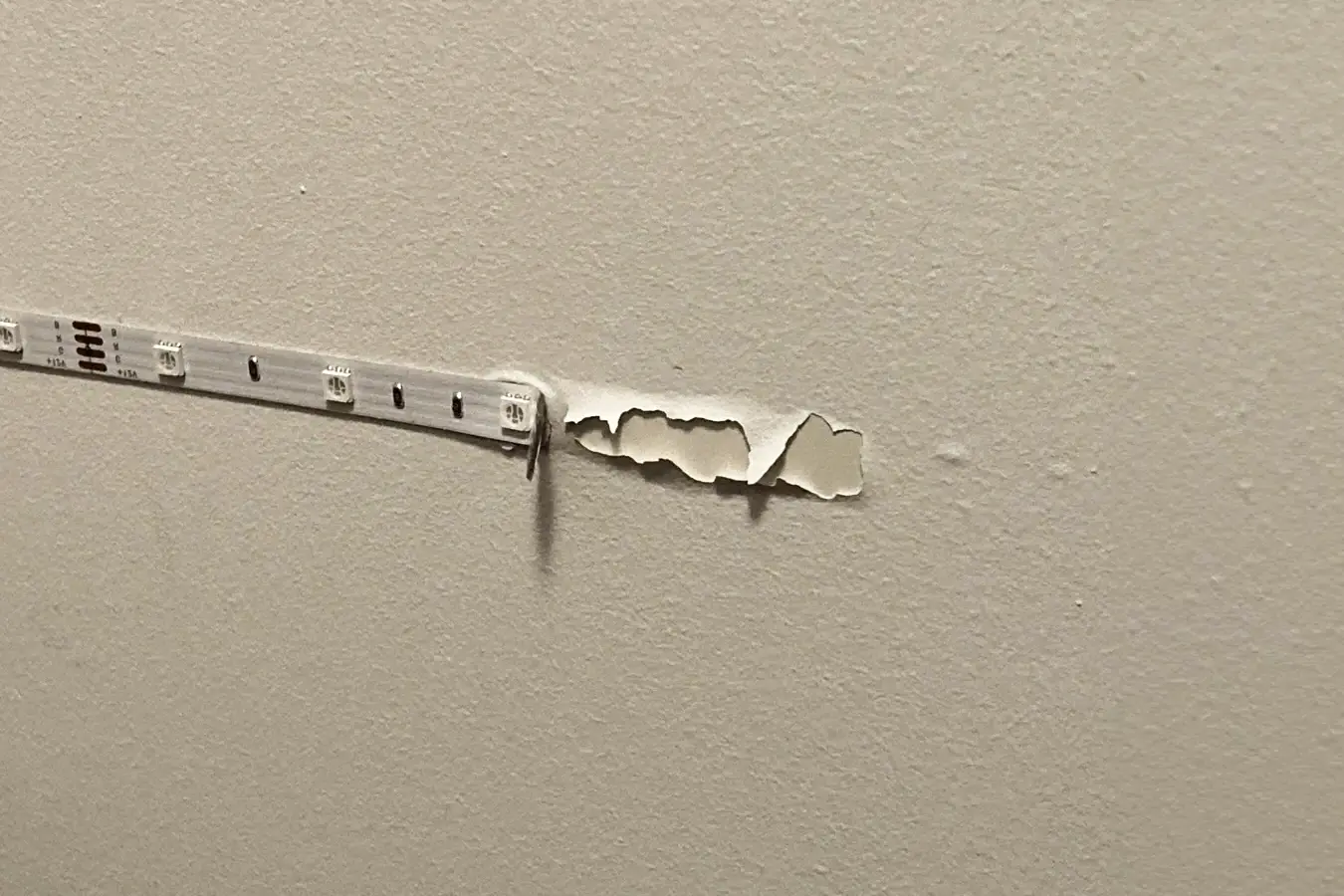Have you ever wondered why your LED strip lights lose their luster over time, dimming at the edges or along their length? This common issue plagues many, but fear not – we’re here to illuminate the causes and offer effective solutions.
LED strip lights often dim due to voltage drop, insufficient power supply, wiring issues, or the natural aging process of the LEDs. Identifying and addressing these factors is crucial for restoring and maintaining their brightness.
Continue reading to dive deeper into each cause and explore practical tips and tricks for keeping your LED strip lights shining brightly. Our guide is packed with expert advice and simple solutions tailored for both beginners and seasoned DIY enthusiasts.
Voltage Drop: Understanding Its Impact
Voltage drop is the primary culprit when it comes to dimming LED strip lights. As electricity flows through the strip, resistance causes a decrease in voltage, leading to diminished brightness. This issue becomes more pronounced in longer strips or when multiple strips are connected.
The Importance of a Proper Power Supply
An inadequate power supply can starve your LED strips of energy, leading to dimming. Ensuring that your power supply matches the requirements of your LED strips is crucial for maintaining optimal brightness.
Wiring Issues: Identification and Resolution
Faulty or inadequate wiring can also lead to dimming issues. Loose connections, incorrect wire gauges, or long wire runs can all contribute to voltage drop and reduce the efficiency of your LED lighting.
The Effect of Aging on LED Strip Lights
Over time, LED strips can naturally degrade and lose brightness. This aging process is inevitable, but understanding it can help you manage your expectations and plan for replacements when necessary.
Troubleshooting Dim LED Strip Lights
Diagnosing Common Issues
Begin by diagnosing the issue. Check for obvious signs of wear, loose connections, or inadequate power supply. Use a multimeter to check for voltage drop across the strip.
Essential Tools for Troubleshooting
Equip yourself with essential tools like a multimeter, wire strippers, and connectors. These tools will be invaluable in diagnosing and fixing issues with your LED strip lights.
Practical Techniques for Issue Resolution
Once you’ve identified the problem, employ practical techniques to resolve it. This might involve securing loose connections, upgrading the power supply, or even shortening the LED strip to reduce resistance.
Understanding and Preventing Voltage Drop in LED Strips
Voltage drop occurs when electricity traverses a conductor, such as the wires within LED strips. The fundamental principle at play is Ohm’s Law, which states that as current flows through a conductor, it encounters resistance. This resistance results in a gradual loss of voltage as the electricity progresses along the strip. For LED strip lights, this presents a challenge because they are designed to emit light, not generate heat through resistance like electric heaters. Therefore, voltage drop is a hindrance to achieving optimal brightness and performance.
Factors Contributing to Voltage Drop
Several factors contribute to voltage drop in LED strips, and understanding these elements is vital to preventing excessive dimming. One critical factor is the length of the LED strip itself. Longer strips inherently introduce more wire length, which equates to increased resistance and voltage drop. Additionally, the maximum run length specified by the manufacturer plays a crucial role. Exceeding this limit can significantly exacerbate voltage drop issues. Furthermore, considering the voltage supply is essential. LED strips come in various voltage ratings, and matching the strip’s voltage to the power supply is critical. Using different voltages can lead to efficiency loss and, ultimately, dimming.
- Length and Maximum Run: When it comes to addressing voltage drop, the length of the LED strip is a primary concern. Longer strips naturally have more wire, which translates to greater resistance and a higher potential for voltage drop. This phenomenon is a result of Ohm’s Law, which dictates that as current flows through a conductor (in this case, the wires in the LED strip), it encounters resistance, leading to a loss of voltage. To mitigate this, it’s essential to keep the length of the LED strip running within the manufacturer’s recommended limits. Exceeding these limits can result in a noticeable reduction in brightness.
- Voltage Considerations: Matching the voltage of your LED strip to the power supply is a critical consideration in preventing excessive voltage drop. LED strips come in various voltage ratings, such as 12V and 24V. It’s imperative to ensure that the power supply you use aligns with the voltage requirements of the strip. Mismatching voltages can lead to inefficiencies, reduced brightness, and even damage to the LED strip. Therefore, when planning your LED lighting setup, always select a power supply that matches the voltage rating of your LED strip to maintain optimal performance and brightness.
Preventing Excessive Voltage Drop
Preventing excessive voltage drop in your LED strip lights requires strategic power supply management. To maintain consistent brightness across your installation, consider these tips:
- Select the Right Power Supply: Begin by ensuring that your power supply matches the voltage and wattage requirements of your LED strip. Undersized power supplies can lead to dimming, while oversized ones can be inefficient and potentially cause damage. Refer to the manufacturer’s recommendations for the ideal power supply.
- Calculate Total Power Load: Determine the total power load of your LED strips by adding up the wattage of all connected strips. Avoid overloading the power supply, as it can result in voltage drop and reduced brightness. Use an appropriate power supply capacity based on your calculations.
- Voltage Regulation: Some power supplies come with voltage regulation features that help maintain a stable voltage output even under load variations. Opting for such power supplies can help combat voltage drop and ensure consistent brightness.
- Use Thicker Wire: Increasing the gauge (thickness) of the wire used for connecting LED strips can reduce resistance and minimize voltage drop. Consult an LED strip voltage drop chart or calculator to determine the suitable wire gauge based on your installation’s length and wattage.
- Parallel Wiring: Instead of running a single long wire from the power supply to the LED strip, use parallel wiring. This involves distributing power from the power supply to multiple points along the LED strip, reducing the distance each section of wire needs to cover, and minimizing voltage drop.
Amplifiers for Extended Runs
For particularly long LED strip runs or complex installations, amplifiers can be a valuable tool. These devices boost the voltage and ensure that the LED strips receive an adequate power supply to maintain brightness. Amplifiers are typically installed at regular intervals along the length of the LED strip, effectively “amplifying” the power supply’s output to counteract voltage drop. When considering amplifiers, consult the manufacturer’s guidelines and recommendations for your specific LED strip model.
Utilizing Additional Power Supplies
In situations where your LED strip installation is extensive or intricate, dividing it into power supply zones can help combat voltage drop effectively. Each zone consists of its own power supply, reducing the distance electricity needs to travel. This approach ensures that each section of the LED strip receives an optimal power supply, maintaining consistent brightness throughout the installation. However, it’s crucial to synchronize the zones properly to prevent uneven lighting.
By implementing these strategies, you can effectively prevent excessive voltage drops in your LED strip lighting setup, ensuring that your lights shine brightly and consistently across the entire installation.
Effective Strategies for Enhancing LED Brightness
Upgrading your power supply is a strategic move to enhance the brightness of your LED strip lights. If you find that your current power supply is struggling to meet the demands of your LED strips, consider these steps:
- Assess Your Power Requirements: Begin by calculating the total power requirements of your LED strips. Add up the wattage of all connected strips to determine the power load. Make sure your new power supply has a capacity that exceeds this load to prevent voltage drop and dimming.
- Higher Capacity Power Supply: Investing in a higher-capacity power supply provides the necessary power reserves to ensure your lights shine brightly without any drop in performance. Choose a power supply that not only meets your current needs but also accommodates any future expansions or additions to your LED setup.
- Voltage Compatibility: Ensure that the upgraded power supply matches the voltage specifications of your LED strips. Mismatched voltages can lead to damage or suboptimal performance. Always refer to the manufacturer’s recommendations to select the appropriate power supply.
Preventative Measures for Sustained LED Performance
Ensure your LED strip lights remain vibrant and efficient with these preventative measures:
Best Practices in LED Strip Installation
Proper installation is key to longevity. Follow these best practices:
- Calculate Power Requirements: Determine the wattage needed for your project.
- Use Appropriate Wiring: Choose the right wire type and gauge.
- Secure Connections: Ensure all connections are tight and reliable.
Routine Maintenance Tips
Regular upkeep is essential. Maintain your LED strips with these tips:
- Check Connections: Periodically inspect and tighten loose connections.
- Monitor for Wear: Look out for signs of wear, like damaged insulation.
Choosing High-Quality LED Strips
Invest wisely for lasting results:
- Seek Quality: Opt for LED strips with positive reviews and warranties.
- Long-Term Benefits: High-quality strips offer durability and longevity.
- Implementing these measures guarantees sustained LED performance, keeping your space brilliantly lit.
Sonuç
In summary, this blog provides a comprehensive guide for addressing LED strip dimming issues and ensuring long-lasting, bright lighting. Whether you’re a beginner or a seasoned DIY enthusiast, these expert insights and solutions will help you achieve optimal LED strip performance.
In the world of LED strip lights, one name shines brightly – Unitop. As a leading manufacturer of high-quality LED şerit ışıklar ve LED neon flex, we’re here to illuminate your spaces with brilliance. If you have any questions or specific requirements or seek expert guidance, don’t hesitate to reach out to us. Our team of professionals is ready to assist you on your journey to well-lit spaces. Say goodbye to dimming issues and embrace the radiance of Unitop’s LED solutions. Brighten your world with Unitop, where expertise meets excellence in the LED industry. Bize ulaşın today, and let’s lighten up your vision!

Tom şu anda Unitop (Çin) Co, Limited. Bir süredir LED Aydınlatma 2005'ten beri sektörde. Satış & pazarlama ve fabrika yönetimi konularında uzmandır. Vücut geliştirmeyi seviyor ve aynı zamanda çılgın bir Apple Hayranı! Çalışkan bir adamdır ve yeni şeyler öğrenmeyi ve denemeyi sever.
E-posta: tom@unitopledstrip.com WhatsApp: +86-18680307140






Cevapla
Tartışmaya katılmak ister misiniz?Katkıda bulunmaktan çekinmeyin!